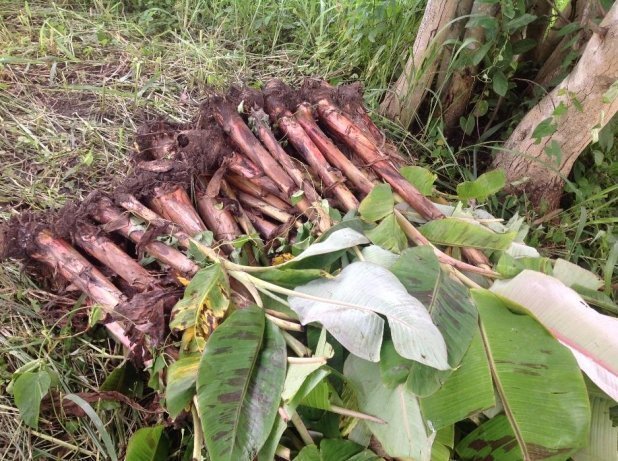Topic Content:
- Methods of Vegetative Propagation
- Natural Vegetative Propagation – suckers, bulbs, rhizomes, corms, runners
stem tubers, root tubers - Artificial Vegetative Propagation – cutting, layering, budding, grafting
- Natural Vegetative Propagation – suckers, bulbs, rhizomes, corms, runners
Asexual, or Vegetative Propagation, involves the use of vegetable parts of crops as planting materials. Plant parts that can be used are stems, roots, and leaves.
Asexual propagation is suitable for the cultivation of crops that do not produce seeds.
Examples of crops that can be propagated vegetatively are cassava, yam, potato, banana, breadfruit, cocoyam, onion, pineapple, etc.

Methods of Vegetative Propagation:
There are two main types of vegetative propagation namely:
1. Natural method of vegetative propagation.
2. Artificial method of vegetative propagation.
1. Natural Vegetative Propagation:
Many plants produce propagation parts naturally. These parts can be used to produce new plants.
The methods vary and include the following:
a. Suckers:
These are short underground horizontal branches ending in terminal buds. They are modified stems that produce natural branches. Examples of crops, that can be propagated by suckers, are pineapple, banana, and plantain.

You are viewing an excerpt of this Topic. Subscribe Now to get Full Access to ALL this Subject's Topics and Quizzes for this Term!
Click on the button "Subscribe Now" below for Full Access!
Subscribe Now
Note: If you have Already Subscribed and you are seeing this message, it means you are logged out. Please Log In using the Login Button Below to Carry on Studying!



Thanks a lot 🙏🙏🙏
God bless you 👼👼🙏🙏
Well detailed and explanatory write-up.